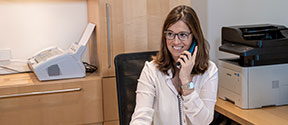faltenbehandlung.jpg
logo.svg
faltenbehandlung_.jpg
shorUrl.txt
infotelefon.jpg
karte.jpg
Boxen/
Finanzierung-Box.jpg
Chirurgen/Dr-Becker/
Dr.Becker-Triologie-366x366px-001.jpg
Dr.Becker-Triologie-366x366px-002.jpg
Dr.Becker-Triologie-366x366px-003.jpg
Chirurgen/Dr-Gabka/
Prof.-Dr.-med.-Dr.-med.-habil.-Christian-J.-Gabka_366x366px_01.jpg
Prof.-Dr.-med.-Dr.-med.-habil.-Christian-J.-Gabka_366x366px_02.jpg
Prof.-Dr.-med.-Dr.-med.-habil.-Christian-J.-Gabka_366x366px_03.jpg
Dr.Gabka-Triologie_366x366px.jpg
Chirurgen/Dr-Schneider/
Dr.Schneider-Triologie-366x366px-001.jpg
Dr.Schneider-Triologie-366x366px-002.jpg
Dr.Schneider-Triologie-366x366px-003.jpg
Chirurgen/Dr-Schreyer/
Dr.-med.-Anna-Chi-Schreyer-366x366px-001.jpg
Dr.-med.-Anna-Chi-Schreyer-366x366px-003.jpg
Dr.-med.-Anna-Chi-Schreyer-366x366px-002.jpg
Chirurgen/Graf-von-Spiegel/
Dr.v.Spiegel-Triologie-002_366x366px.jpg
Dr.v.Spiegel-Triologie-001_366x366px_Neu.jpg
Dr.v.Spiegel-Triologie-001_366x366px.jpg
Dr.v.Spiegel-Triologie-003_366x366px.jpg
Dr.v.Spiegel-Triologie-001_366x366px_02.jpg
Contentbilder/
3-D-Simulation-Crisalix-Brustvergroesserung-400x257px..jpg
Analyse-des-Gesichts-vor-Faltenbehandlung-400x257px.jpg
Anzeichnen-Markierungspunkte-bei-Augenlidstraffung-400x257px.jpg
Analyse-der-Gesichtsstruktur-vor-Stirn-und-Augenbrauenlifting-400x257px.jpg
Analyse-der-Gesichts-und-Halspartie-bei-Profilkorrektur-Kinnkorrektur-400x257px.jpg
Analyse-der-Gesichts-und-Halspartie-bei-Halslifting-Halsstraffung-400x257px.jpg
Analyse-der-Nase-vor-Nasenkorrektur-400x257px.jpg
Analyse-der-Gesichtsstruktur-vor-Facelifting-400x257px.jpg
Downloads/Tipps-zum-Herunterladen/
Patienteninfo-Bauchdeckenstraffung.pdf
Patienteninfo-Fettabsaugung.pdf
Patienteninfo-Nasenkorrektur.pdf
Patienteninfo-Oberlidkorrektur.pdf
Patienteninfo-Unterlidkorrektur.pdf
Patienteninfo-Facelift.pdf
Patienteninfo-Eigenfettbehandlung.pdf
Patienteninfo-Brustverkleinerung-Bruststraffung.pdf
Patienteninfo-Brustvergroesserung-Implantatwechsel.pdf
Patienteninfo-Facelift-Feb.2019.pdf
Headerbilder/
Header-Rekonstruktion-1920x530px_NEU.jpg
Praxisrundgang-Header-1920x530px.jpg
Praxisteam-Header-1920x530px.jpg
Medien-Header-1920x530px.jpg
Dr.-von-Spiegel-Header-1920x530px.jpg
Dr.-Gabka-Header-1920x530px.jpg
Zertifizierung-Header-1920x530px.jpg
Praxis-Klinik-Header-1920x530px.jpg
Kooperationen-Header-1920x530px.jpg
Belegklinik-Dritter-Orden-Muenchen-Header-1920x530px.jpg
Faltenbehandlung-Header-1920x530px.jpg
Rekonstruktion-Header-1920x530px.jpg
Aesthetik-Header-1920x530px.jpg
Chirurgen-Header-1920x530px.jpg
FAQ-Header-1920x530px.jpg
News-Header-1920x530px.jpg
Finanzierung-Header-1920x530px.jpg
Folgekostenversicherung-Header-1920x530px.jpg
Header-Kontakt-1920x530-NEU.jpg
Header-Dr.v.Spiegel-1920x530px-Mai2022-neu.jpg
Header-Praxis-Klinik-1920x530px.jpg
Header-Praxis-Team-1920x530px.jpg
Header-Dr.Beate-Schneider-1920x530px.jpg
Headerbilder/Brust/
Brust-Aesthetik-Header-1920x530px.jpg
Brustkorrektur-beim-Mann-Aesthetik-Header-1920x530px.jpg
Bruststraffung-Aesthetik-Header-1920x530px.jpg
Brustvergroesserung-Aesthetik-Header-1920x530px.jpg
Brustverkleinerung-Aesthetik-Header-1920x530px.jpg
Korrektur-angeborener-Brustfehlbildungen-Aesthetik-Header-1920x530px.jpg
Headerbilder/Brustrekonstruktion/
Brustwiederaufbau-Brusterhaltende-Therapie-Header-1920x530px.jpg
Brustwiederaufbau-Mastektomie-Header-1920x530px.jpg
Brustwiederaufbau-Eigengewebe-Header-1920x530px.jpg
Brustwiederaufbau-Silikon-Header-1920x530px.jpg
Headerbilder/Faltenbehandlung/
Eigenfetttherapie-Faltenbehandlung-Header-1920x530px.jpg
Kaumuskelkorrekur-Faltenbehandlung-Header-1920x530px.jpg
Migraenebehandlung-Faltenbehandlung-Header-1920x530px.jpg
Faltenbehandlung-Header-1920x530px.jpg
Dermabrasion-Faltenbehandlung-Header-1920x530px.jpg
Filler-Faltenbehandlung-Header-1920x530px.jpg
Headerbilder/Gesicht/
Augenbrauen-Stirnlifting-Aesthetik-Header-1920x530px.jpg
Augenlidstraffung-Aesthetik-Header-1920x530px.jpg
Eigenfettbehandlung-Aesthetik-Header-1920x530px.jpg
Facelifting-Aesthetik-Header-1920x530px.jpg
Gesicht-Aesthetik-Header-1920x530px.jpg
Halsstraffung-Aesthetik-Header-1920x530px.jpg
Lippenkorrektur-Aesthetik-Header-1920x530px.jpg
Nasenkorrektur-Aesthetik-Header-1920x530px.jpg
Ohrenkorrektur-Aesthetik-Header-1920x530px.jpg
Profil-und-Kinnkorrektur-Aesthetik-Header-1920x530px.jpg
Augenbrauen-Stirnlifting-Aesthetik-Header-1920x530px_neu.jpg
Profil-und-Kinnkorrektur-Aesthetik-Header-1920x530px_NEU.jpg
Headerbilder/Koerper/
Bauchhaut-Bauchdeckenstraffung-Aesthetik-Header-1920x530px.jpg
Bodylifting-Aesthetik-Header-1920x530px.jpg
Fettabsaugung-Aesthetik-Header-1920x530px.jpg
Intimchirurgie-Aesthetik-Header-1920x530px.jpg
Koerper-Aesthetik-Header-1920x530px.jpg
Mommy-Makeover-Aesthetik-Header-1920x530px.jpg
Nabelkorrektur-Aesthetik-Header-1920x530px.jpg
Oberarmstraffung-Aesthetik-Header-1920x530px.jpg
Oberschenkelstraffung-Aesthetik-Header-1920x530px.jpg
Uebermaessiges-Schwitzen-Aesthetik-Header-1920x530px.jpg
Kooperationspartner/
Kooperationspartner-Dr.-von-Gregory-366x180px-schwarz.jpg
Kooperationspartner-Dermatologie-im-Schlosspalais-366x180px-schwarz.jpg
Kooperationspartner-Pathologiepraxis-Muenchen-366x180px-schwarz.jpg
Kooperationspartner-Strahlentherapie-Nymphenburg-366x180px-schwarz.jpg
Kooperationspartner-ZEP-366x180px-schwarz.jpg
Logo-Helios-Klinikum-Muenchen-West.jpg
Klinikum-Dritter-Orden-Brustzentrum.jpg
Praxisteam/
Karin-Schmitz-NEU-366x366px.jpg
Praxisteam-366x366px-004.jpg
Praxisteam-366x366px-006.jpg
Praxisteam-366x366px-Default-NEU.jpg
Karin-Schmitz-366x366px.jpg
Livia-v.-Spiegel-366x366px.jpg
Tanja-Gruner-366x366px.jpg
Praxisteam-366x366px-Default.jpg
Tanja-Reiter-NEU-366x366px.jpg
Livia-v.-Spiegel-NEU-366x366px.jpg
Tanja-Gruner-NEU-366x366px.jpg
Teaserboxen/Aesthetik/
Brust-Aesthetik-Teaserbild_360x360px.jpg
Koerper-Aesthetik-Teaserbild_360x360px.jpg
Gesicht-Aesthetik-Teaserbild_360x360px.jpg
Teaserboxen/Brust/
Brustkorrektur-beim-Mann-Aesthetik-Teaserbild-360x360px.jpg
Bruststraffung-Aesthetik-Teaserbild-360x360px.jpg
Brustvergroesserung-Aesthetik-Teaserbild-360x360px.jpg
Brustverkleinerung-Aesthetik-Teaserbild-360x360px.jpg
Korrektur-angeborener-Brustfehlbildungen-Aesthetik-Teaserbild-360x360px.jpg
Teaserboxen/Brustrekonstruktion/
Brustwiederaufbau-Brusterhaltende-Therapie-Teaserbild-360x360px.jpg
Brustwiederaufbau-Mastektomie-Teaserbild-360x360px.jpg
Brustwiederaufbau-Eigengewebe-Teaserbild-360x360px.jpg
Brustwiederaufbau-Silikon-Teaserbild-360x360px.jpg
Teaserboxen/Faltenbehandlung/
Hydrafacial-Faltenbehandlung-Teaserbild_360x360px.jpg
Eigenfetttherapie-Faltenbehandlung-Teaserbild_360x360px.jpg
Kaumuskelkorrektur-Faltenbehandlung-Teaserbild_360x360px.jpg
Migraenebehandlung-Faltenbehandlung-Teaserbild_360x360px.jpg
Dermabrasion-Faltenbehandlung-Teaserbild_360x360px.jpg
Filler-Faltenbehandlung-Teaserbild-360x360px.jpg
Teaserboxen/Gesicht/
Augenbrauen-und-Stirnlifting-Aesthetik-Teaserbild-360x360px.jpg
Augenlidstraffung-Aesthetik-Teaserbild-360x360px.jpg
Eigenfettbehandlung-Aesthetik-Teaserbild-360x360px.jpg
Facelifting-Aesthetik-Teaserbild-360x360px.jpg
Halsstraffung-Aesthetik-Teaserbild-360x360px.jpg
Lippenkorrektur-Aesthetik-Teaserbild-360x360px.jpg
Nasenkorrektur-Aesthetik-Teaserbild-360x360px.jpg
Ohrenkorrektur-Aesthetik-Teaserbild-360x360px.jpg
Profil-und-Kinnkorrektur-Aesthetik-Teaserbild-360x360px.jpg
Augenbrauen-und-Stirnlifting-Aesthetik-Teaserbild-360x360px_NEU.jpg
Profil-und-Kinnkorrektur-Aesthetik-Teaserbild-360x360px_NEU.jpg
Teaserboxen/Ihre-Chirurgen/
Gesine-Schilling-Teaserbild_360x360px.jpg
Christian-J.-Gabka-Teaserbild_360x360px.jpg
Felix-Graf-von-Spiegel-Teaserbild_360x360px.jpg
Medien-Teaserbild_360x360px.jpg
Philosophie-Teaserbild_360x360px.jpg
Ingrid-Winter-Teaserbild_360x360px.jpg
Dr.-med.-Anna-Chi-Schreyer-360x360px.jpg
Dr.-Felix-v.-Spiegel-Teaser_360x360px.jpg
Dr.-Christian.J.Gabka-Teaser_360x360px.jpg
Teaserboxen/Informationen/
FAQ-Teaserbild_360x360px.jpg
Finanzierung-Teaserbild_360x360px.jpg
Folgekostenversicherung-Teaserbild_360x360px.jpg
News-Teaserbild_360x360px.jpg
Teaserboxen/Koerper/
Bauchhaut-und-Bauchdeckenstraffung-Aesthetik-Teaserbild-360x360px.jpg
Bodylifting-Aesthetik-Teaserbild-360x360px.jpg
Fettabsaugung-Aesthetik-Teaserbild-360x360px.jpg
Intimchirurgie-Aesthetik-Teaserbild-360x360px.jpg
Mommy-Makeover-Aesthetik-Teaserbild-360x360px.jpg
Nabelkorrektur-Aesthetik-Teaserbild-360x360px.jpg
Oberarmstraffung-Aesthetik-Teaserbild-360x360px.jpg
Oberschenkelstraffung-Aesthetik-Teaserbild-360x360px.jpg
Uebermaessiges-Schwitzen-Aesthetik-Teaserbild-360x360px.jpg
Teaserboxen/Praxis-Klinik/
Kooperationen-Teaserbild_360x360px.jpg
Praxisrundgang-Teaserbild_360x360px.jpg
Praxisteam-Teaserbild_360x360px.jpg
Zertifizierung-Teaserbild_360x360px.jpg
Belegklinik-Dritter-Orden-Muenchen-Teaserbild_360x360px.jpg
Aesthetik-Teaserbild_360x360px.jpg
Ihre-Chirurgen-Teaserbild_360x360px.jpg
Teaser-Praxis-Team_360x360px.jpg
Teaser-Praxis-Rundgang_360x360px.jpg
Zertifiziert/
ACREDIS-Zertifikat-Nymphenburger-Praxis-fuer-Plastische-und-Aesthetische-Chirurgie.jpg
Aertzeliste-2018-Top-Aerzte-Bauchdeckenstraffung-Focus-Gesundheit.pdf
Aertzeliste-2018-Top-Aerzte-Brustchirurgie-Focus-Gesundheit.pdf
Zertifikat-VDAEPC-Umfrage-2017.pdf
Urkunde-Focus-Aerzteempfehlung-2018-Prof.-Gabka.pdf
Aertzeliste-2019-Top-Aerzte-Bauchdeckenstraffung-Focus-Gesundheit.pdf
Aertzeliste-2019-Top-Aerzte-Brustchirurgie-Focus-Gesundheit.pdf
Focus-Siegel-2022-Brustchirurgie.png
Focus-Siegel-2022-Bodylift.png
Focus-Siegel-2022-Bauchstraffung.png


